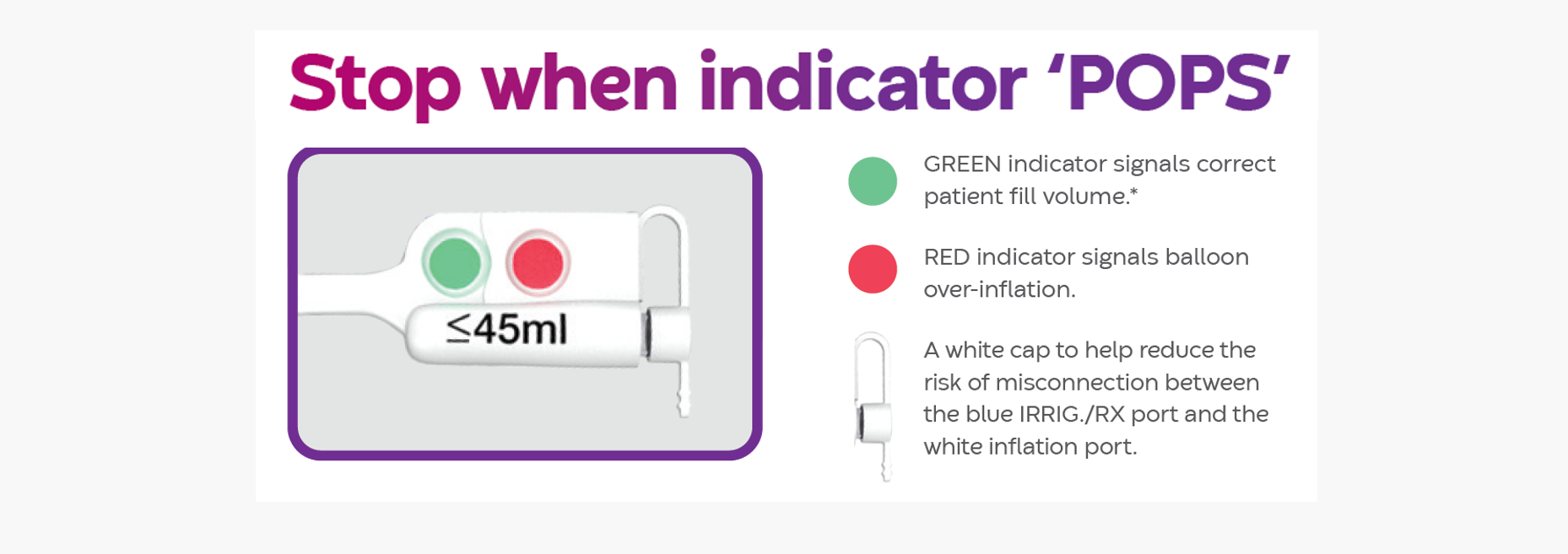We’re all different
We're all anatomically different, and that can be an important fact to keep in mind when it comes to medical devices—for instance, a fecal management system. Not considering patients' anatomy can lead to less satisfactory treatment results and complications.1 On the other hand, if you, as a nurse, have in mind that the rectal vault anatomy (e.g. lumen size as well as the number and position of the valves of Houston) may vary from patient to patient, choosing the right fecal management system will lead to more successful management of fecal incontinence.1
Why is it important?
In the ICU, there are several clinical challenges associated with fecal incontinence, including the risk of conditions such as perineal dermatitis, skin breakdown, development of pressure ulcers, sepsis, as well as cross-contamination.2 In addition to these clinical risks, managing fecal incontinence requires considerable nursing time.2
A patient’s unique anatomy can impact those risks when attempting to divert stool1. Using a fecal management system with a fill indicator to signal optimal filling volume is a viable method to achieve reduction of risks such as expulsion, leakage, and overfilling.1Furthermore, a fecal management system will help you reduce unnecessary time and costs being expended on managing fecal incontinence.2
The solution
All indwelling fecal management systems require inserting the device within the rectum. However, just like your patients, not all fecal management systems are the same. In fact, Flexi-Seal™ Fecal Management Systems are the only solution that sense when the retention balloon within the patient has optimal fill and visually indicates overinflation to provide individualization of balloon volume. Flexi-Seal™ Fecal Management Systems are designed to ensure optimal filling for each patient. A study showed that 75% of patients require less than 40 ml of fluid to achieve optimal fill volume.1 That's why a fill indicator is a valuable feature of the product.
Another key advantage of Flexi-Seal™ systems' fill indicators is their adaptability. You can easily adjust the filling volume to accommodate different situations, such as when you're repositioning the patient or moving them to a chair. Achieving the appropriate fit per individual patient is not limited to the fill indicators on a Flexi-Seal™. The retention balloon on Flexi-Seal™ Fecal Management Systems conforms to the patient's anatomy to create an effective seal to minimize leakage and is designed to minimize the risk of tissue necrosis. The supple and flexible design helps reduce the risk of developing pressure sores. This flexibility is a testament to the versatility of Flexi-Seal™ Fecal Management Systems and their ability to meet the changing needs of patient care.
Individualization of balloon fill is recommended for safety and care management1 – and Flexi-Seal™ is your solution for the individualized fecal management care your patient deserves.


- References
- Optimizing Fecal Containment Using Individualized Balloon Volumes; Catherine T. Milne APRN, MSN, BC-ANP, CWOCN1; Ann Durnal RN, BSN, CWOCN2; Mary Webb, RN, BSN, MA, CIC3, 1Connecticut Clinical Nursing Associates, LLC, Bristol, Connecticut; 2 Ascension Carondelet St Mary’s Hospital, Tucson, Arizona;3San Mateo Medical Center, San Mateo, California.
- Bayón García C, Wyncoll D, De Luca E, Dierkes C, Franci A, Gallart E, Niederalt G, Binks R P Vaes, B Soderquist, S Gibot. Expert recommendations for managing acute faecal incontinence with diarrhoea in the intensive care unit. J Intensive Care Soc. 2013;14 (Suppl 2):1-9.
